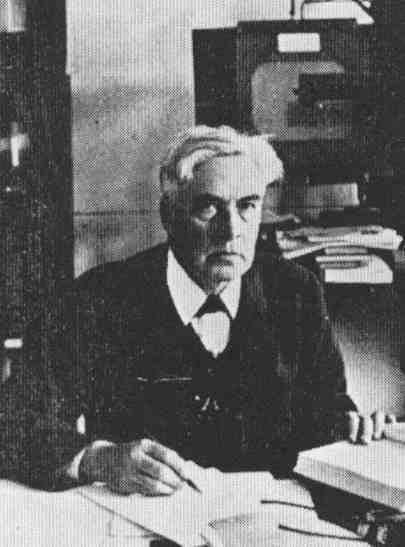Science has brought together many talented people who offer unique developments to the world. Their inventions make the life of mankind much easier and better. Learn more at edinburgh-future.
Of course, behind every innovation hides the incredible work of scientists. They can’t simply create something new out of the blue but have to conduct various experiments and research first. However, perseverance and endless dedication to their work contribute to achieving the best results.
It is hard to disagree that Edinburgh has given the world many gifted people. It seems that the city has all the conditions needed for the development and cultivation of talents. Many Edinburgh residents managed to gain fame in science.
Robert Thorburn Ayton Innes is one of them. Even though he was better known in the scientific community as a South African scientist, Robert was closely linked with his native Edinburgh.
Early years
The future scientist was born in Edinburgh on November 10, 1861.
The boy was seriously interested in astronomy from an early age. Robert had such a motivation that even decided to go to Australia to earn money from selling wine and do more of what he loved.
Interestingly, at that time, a young scientist managed to discover previously unknown double stars, using his home-made 12-inch reflecting telescope.
Debut
In 1900, Robert published his first publication, a double stars’ catalogue. Moreover, it also covered earlier observations shared by southern astronomers.
The next related work of the scientist was published in 1927.
However, Innes wasn’t limited to catalogues only and also wrote articles devoted to Venus’ and Mars’ orbits.
Genius
Speaking about Robert Innes’ biography, it is fair to mention one important fact.
He didn’t have an official education in astronomy. Still, Robert successfully engaged in research and offered new facts that became real sensations.
All of this, without exaggeration, testifies to the man’s genius and uniqueness. Moreover, he wasn’t doubted even among respected scientists. Otherwise, how would you explain the fact that Robert was appointed to work at the Royal Observatory, Cape of Good Hope in 1896?
At that stage of his career, the scientist managed to discover what later became popular as Kapteyn’s Star.
Director

The year 1903 was marked by a new turn in Innes’ activity. Then he headed the new Transvaal Meteorological Observatory (the Transvaal Observatory since 1906).
In 1909, Robert purchased a unique 9-inch Grubb refractor for the observatory.
However, in 1925, the scientist began to use a 26.5-inch refractor, which was better for studying hard-to-see double stars in more detail.
New stage
In addition, in 1912, Robert was appointed astronomer at the newly created Union Observatory (also known as the Republic Observatory or the Johannesburg Observatory).
That position and institution subsequently played a significant role in the scientist’s career.
Ground-breaking discovery
John Franklin-Adams presented the Republican Observatory with a 10-inch astrographic camera. Later, Robert used it for his sensational discovery of Proxima Centauri.
Thus, the scientist discovered a faint star quite close to Alpha Centauri in 1915.
However, due to the fact that the scientist had very little evidence and couldn’t measure the exact distance at that time, the discovery consisted in the very fact of a new star’s existence. Robert Innes named it Proxima in 1917.
By the way, later, Harold Lee Alden managed to accurately establish the above-mentioned distance. It happened at the Yale observatory in Johannesburg, which was equipped with a long-focus camera designed for stellar parallax study.
Achievements
If we talk about Robert’s main contribution to astronomy, it is certainly the study of double stars.
At the same time, most of the scientist’s discoveries were devoted to stars with faint companions, as they weren’t noticed by other astronomers.
Besides, Innes was seriously engaged in the measurement of the relative positions of binary pairs. He did it using a filar micrometre. The scientist also periodically re-measured already-known double stars. It was necessary to determine their orbits.
Good result

In addition, Robert Innes succeeded in formulating a simplified method to specify the double stars’ orbits. Combining these parameters with other measurements (in particular, with radial velocity), it is possible to determine the mass of each individual star in a binary pair.
Sudden end
In 1923, Leiden University awarded Robert with an honorary doctorate (honoris causa). Even though the scientist retired in 1927, he continued his activities.
In particular, his next project had to be a 3D cinema. However, the implementation of this idea wasn’t destined to be completed. The reason was his sudden death on March 13, 1933.

The career of Robert Thorburn Ayton Innes is another proof that Edinburgh is breeding real talents. Even though the scientist didn’t work and develop in his native city, his Edinburgh spirit and undeniable genius always reminded him of his birthplace.
Source:
- https://www.s2a3.org.za/bio/Biograph_final.php?serial=1382
- https://academic.oup.com/mnras/article/115/2/131/2603829?login=false
- https://www.cambridge.org/core/journals/publications-of-the-astronomical-society-of-australia/article/from-amateur-astronomer-to-observatory-director-the-curious-case-of-r-t-a-innes/0A6A834C0A0CD47DC84BE5C6AAEF1CEE